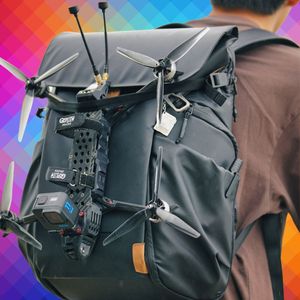In a recent video, Nick Burns of geeksvana provided an in-depth review and analysis of the UK Civil Aviation Authority's (CAA) call for input on potential changes to drone regulations in the UK. As an expert in the recreational and commercial drone industry, Nick highlighted the key points that UK drone operators should be aware of and provided his insight into how proposed changes could impact drone enthusiasts. If you dont want to watch the full 1h30 video, read on for the key takeaways.
Overview of the Call for Input
The call for input is the initial stage in the CAA's process to review and update drone regulations in the UK. It outlines early thinking on ideas and concepts that could be part of new drone rules going forward. The CAA is seeking feedback now before finalizing proposals that will be put forward in an official public consultation expected later this year.
Some of the main goals mentioned are simplifying and clarifying regulations to make compliance easier, implementing new technologies like remote ID and geofencing for safety, and enabling growth of the drone industry.
You can download the PDF from the CAA here - CAP2569: Call for Input: Review of UK UAS Regulations (caa.co.uk)
Key Areas Up for Review
The 15 key areas covered in the call for input:

Operational Categories
- Rename categories to be more intuitive for users.
- Simplify operational categorizations to make requirements easier to understand.
- Update regulation framework to ensure it is suitable for model aircraft flyers.

Pilot Competency
- Expand the pilot competency framework with a basic and advanced certification.
Product Requirements
- Adopt new manufacturing standards requiring drones to be safe and secure by design.
- Introduce a CAA product labeling scheme to help consumers make informed purchases.

- Change the weight-based criteria for exclusions from certain requirements.
- Implement remote ID technology requiring drones to transmit identification data during flights.
- Require geo-awareness features to help prevent drones from entering restricted airspace.
- Improve user guidance by requiring safety information to be provided digitally with drones.
Policy and Guidance
- Adopt a new digitalized risk assessment approach for operations.
- Support users of non-class marked legacy drones during the transition period.
- Simplify policy document structure by consolidating and clarifying different regulations.
- Update the Skyway Code to improve guidance for different user groups.
Other
- Combine overlapping regulations to reduce duplication.
- Implement registration validation requiring operator ID before flights.
Remote ID and Sub-250g Drones
A major focus was on remote ID requirements and how they could impact sub-250g drones, which currently have exemptions from many rules in the UK. The CAA suggests extending remote ID and geofencing to drones below 250g that have cameras.
Nick stressed the importance of recreational flyers emphasizing how critical the sub-250g allowances are to the hobby in their consultation responses. He highlighted the need to watch for unintended consequences from changes to the exemption criteria.
Closing Thoughts
Nick's in-depth review of the CAA's call for input highlighted the significance of this initial pre-consultation stage for shaping drone regulation in the UK going forward. While the CAA aims to achieve laudable goals like simplifying rules and incorporating new technologies, controversial proposals like extending remote ID to sub-250g drones raise valid concerns for recreational flyers.
It is therefore critical that drone enthusiasts take this opportunity to loudly communicate the importance of maintaining the flexible permissions granted to sub-250g drones today. Engaging now before concepts are set in stone can help prevent overly restrictive requirements from being codified down the line. Even just participating by selecting pre-set options provides valuable perspective.
Overall, the UK drone community has a key chance through responding to the call for input to clearly convey their priorities, experiences, and recommendations before the CAA finalizes their proposals for the full public consultation expected later this year. This initial input truly represents an opportunity to influence the direction of regulatory changes rather than just reacting later when decisions have already been made. Nick wisely encouraged drone flyers to make their voices heard.







